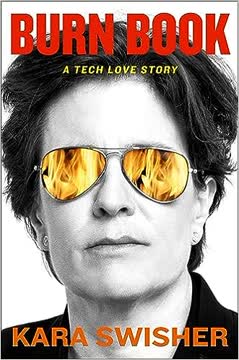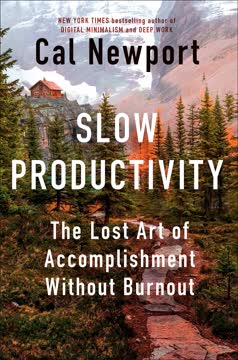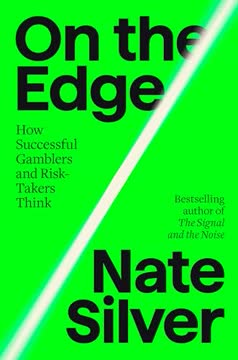ข้อสำคัญ
1. ยอมรับความกระชับอย่างชาญฉลาด: พูดให้น้อยแต่ได้ใจความ เพื่อฝ่าฟันความวุ่นวาย
"ความกระชับคือความมั่นใจ ความยาวคือความกลัว"
ข้อมูลล้นหลามเป็นเรื่องจริง ในยุคดิจิทัลที่เราเผชิญกับคำพูดจำนวนมหาศาลจากหลายช่องทางอย่างไม่หยุดหย่อน ทำให้ความสนใจของเราสั้นลงและมักเลือกที่จะอ่านผ่าน ๆ แทนการอ่านอย่างลึกซึ้ง
ความกระชับอย่างชาญฉลาดคือคำตอบ นี่คือกลยุทธ์การสื่อสารที่เน้นการส่งมอบคุณค่าให้มากที่สุดในเวลาที่น้อยที่สุด ด้วยการใช้หลักการนี้ คุณจะสามารถ:
- เพิ่มโอกาสที่ข้อความของคุณจะถูกอ่านและจดจำ
- ให้เกียรติทั้งเวลาและสติปัญญาของผู้รับสาร
- ฝึกฝนความคิดให้เฉียบคมและสื่อสารได้ชัดเจนขึ้น
ความกระชับอย่างชาญฉลาดไม่ได้หมายความว่าต้องลดทอนเนื้อหาหรือเสียความลึกซึ้ง แต่คือการกลั่นกรองความคิดซับซ้อนให้อยู่ในรูปแบบที่สำคัญและทรงพลังที่สุด เพื่อให้เข้าถึงง่ายและตราตรึงใจผู้ฟัง
2. ดึงดูดความสนใจอย่างรวดเร็ว: สร้างหัวข้อและประโยคเปิดที่ทรงพลัง
"คุณมีเวลาไม่กี่วินาทีเท่านั้นที่จะให้คำตอบที่ชัดเจน หลังจากนั้นผู้อ่านจะถูกดึงไปยังอีเมล แท็บ หรือการแจ้งเตือนอื่น ๆ ที่แข่งขันกันเพื่อแย่งเวลาของเขา"
ความประทับใจแรกสำคัญมาก ในโลกที่เต็มไปด้วยสิ่งรบกวน หัวข้อและประโยคเปิดของคุณคือกุญแจสำคัญที่จะกำหนดว่าผู้ฟังจะสนใจหรือเลื่อนผ่าน
เคล็ดลับสร้างประโยคเปิดที่ดึงดูด:
- ใช้คำไม่เกิน 6 คำสำหรับหัวข้อและบรรทัดแรก
- เริ่มด้วยประเด็นสำคัญที่สุดหรือข้อเท็จจริงที่น่าประหลาดใจ
- หลีกเลี่ยงความซับซ้อนหรือความลึกลับ – ความชัดเจนสำคัญกว่าความคิดสร้างสรรค์
- ใช้คำกริยาที่กระตือรือร้นและภาษาที่ชัดเจนมีชีวิตชีวา
จำไว้ว่า หากคุณไม่สามารถดึงดูดความสนใจได้ทันที ข้อความที่คุณตั้งใจสื่อสารอย่างพิถีพิถันอาจไม่มีโอกาสถูกอ่านเลย ให้ทุกคำในประโยคเปิดเป็นเหมือนที่ดินมีค่าที่ออกแบบมาเพื่อชักชวนให้ผู้อ่านอยากอ่านต่อ
3. ให้บริบท: อธิบายว่าทำไมข้อความของคุณจึงสำคัญ
"คนส่วนใหญ่ยุ่งเกินกว่าจะเข้าใจไม่ใช่แค่สิ่งที่สำคัญ แต่รวมถึงเหตุผลว่าทำไมมันถึงสำคัญ จงเป็นฮีโร่: บอกพวกเขาอย่างรวดเร็ว ชัดเจน และสว่างไสว"
บริบทคือราชา แม้ว่าคุณจะดึงดูดความสนใจได้แล้ว ผู้ฟังก็ยังต้องเข้าใจว่าข้อความของคุณเกี่ยวข้องกับพวกเขาอย่างไร นี่คือหน้าที่ของส่วน “ทำไมจึงสำคัญ”
วิธีให้บริบทอย่างมีประสิทธิภาพ:
- ใช้คำชี้นำชัดเจน เช่น “ทำไมจึงสำคัญ” หรือ “ภาพรวมใหญ่”
- อธิบายผลกระทบหรือความหมายของข้อมูล
- เชื่อมโยงข้อความกับแนวโน้มหรือประเด็นที่กว้างขึ้น
- รักษาความกระชับ – เพียงหนึ่งถึงสองประโยคก็พอ
เมื่อคุณบอกเหตุผลว่าทำไมข้อความของคุณจึงสำคัญ คุณไม่ได้แค่ให้ข้อมูล แต่ยังสร้างความผูกพันลึกซึ้งขึ้น เพิ่มโอกาสที่ผู้ฟังจะจดจำและลงมือทำตาม
4. จัดโครงสร้างให้อ่านง่าย: ใช้หัวข้อย่อย ตัวหนา และคำชี้นำชัดเจน
"ถ้าคุณเห็นทุกอย่าง คุณจะจำอะไรไม่ได้เลย"
ออกแบบให้เหมาะกับนิสัยการอ่านยุคใหม่ คนส่วนใหญ่ไม่ได้อ่านทุกคำ แต่สแกนหาใจความสำคัญ ความกระชับอย่างชาญฉลาดยอมรับความจริงนี้ด้วยการจัดเนื้อหาให้อ่านง่าย
กลยุทธ์สำหรับเนื้อหาที่อ่านง่าย:
- ใช้ย่อหน้าสั้น ๆ (ไม่เกิน 2-3 ประโยค)
- ใช้หัวข้อย่อยสำหรับรายการและประเด็นสำคัญ
- ตัวหนาคำหรือวลีที่สำคัญเพื่อดึงดูดสายตา
- ใช้หัวข้อหลักและหัวข้อรองเป็นคำชี้นำ
- แบ่งข้อความด้วยช่องว่างให้สบายตา
ด้วยการจัดโครงสร้างแบบนี้ ผู้อ่านจะเข้าใจใจความสำคัญได้รวดเร็ว แม้จะไม่ได้อ่านทุกคำ เพิ่มโอกาสที่ข้อความหลักของคุณจะถูกเข้าใจและจดจำ
5. เลือกใช้คำที่แข็งแรง: เน้นความเรียบง่ายและชัดเจนมากกว่าความซับซ้อน
"อย่าใช้คำว่า ‘การแก้แค้น’ ถ้าคุณใช้คำว่า ‘การตอบโต้’ ได้"
ความเรียบง่ายทรงพลัง บ่อยครั้งเราคิดว่าการใช้คำซับซ้อนทำให้ดูฉลาดหรือมีอำนาจ แต่จริง ๆ แล้วมันอาจทำให้ข้อความคลุมเครือและทำให้ผู้ฟังรู้สึกห่างเหิน
แนวทางเลือกใช้คำที่แข็งแรง:
- เลือกคำสั้นกว่าคำยาว (พยางค์เดียว > สองพยางค์ > สามพยางค์)
- ใช้ภาษาที่จับต้องได้และสร้างภาพในใจ
- หลีกเลี่ยงศัพท์แสงเฉพาะ กลอนซ้ำซาก และคำฟุ่มเฟือย
- ใช้ประโยคกริยาปัจจุบันแทนประโยคถูกกระทำ
- ระบุเจาะจงและแม่นยำในการเลือกคำ
ด้วยการใช้ภาษาที่เรียบง่ายและแข็งแรง คุณจะทำให้ข้อความเข้าถึงง่ายและทรงพลัง จำไว้ว่าเป้าหมายคือสื่อสารให้ชัดเจน ไม่ใช่เพื่ออวดคำศัพท์
6. สื่อสารด้วยภาพ: ใส่รูปภาพและอีโมจิเพื่อเพิ่มความเข้าใจ
"อีโมจิที่เคยเป็นเรื่องเล่น ๆ ของเด็กและมุกตลก กลายเป็นเครื่องมือทรงพลัง 🔥 ที่สื่ออารมณ์ เจตนา และความหมายลึกซึ้งได้"
การสื่อสารด้วยภาพทรงพลัง ในวัฒนธรรมที่เน้นภาพมากขึ้น การใช้รูปภาพ กราฟ และแม้แต่ อีโมจิ ช่วยเพิ่มความเข้าใจและความน่าสนใจได้อย่างมาก
เคล็ดลับการใช้ภาพอย่างมีประสิทธิภาพ:
- ใช้ภาพเรียบง่ายที่สนับสนุนข้อความโดยตรง
- ใช้การแสดงข้อมูลด้วยกราฟเพื่อทำให้ข้อมูลซับซ้อนเข้าใจง่าย
- ใช้อีโมจิอย่างพอเหมาะเพื่อเพิ่มน้ำเสียงหรือสื่อความหมายอย่างรวดเร็ว
- ตรวจสอบให้ภาพเข้าถึงง่ายและเข้าใจได้ทันที
- สร้างสมดุลระหว่างข้อความและภาพเพื่อผลลัพธ์สูงสุด
จำไว้ว่าเป้าหมายคือใช้ภาพเสริม ไม่ใช่แทนที่ข้อความ เมื่อใช้ถูกต้อง ภาพจะทำให้ข้อความของคุณน่าจดจำและแชร์ได้ง่ายขึ้น
7. นำหลักความกระชับไปใช้ในทุกช่องทาง: ตั้งแต่เมลถึงการนำเสนอ
"ความกระชับอย่างชาญฉลาดไม่ใช่เรื่องลึกลับ—สามารถเรียนรู้และสอนกันได้"
ความหลากหลายคือกุญแจ หลักการความกระชับอย่างชาญฉลาดสามารถนำไปใช้ได้กับการสื่อสารทุกรูปแบบ ตั้งแต่เมล โพสต์โซเชียลมีเดีย ไปจนถึงคำพูดและการนำเสนอ
วิธีใช้ความกระชับในช่องทางต่าง ๆ:
- อีเมล: ใช้หัวข้อชัดเจน หัวข้อย่อย และตัวหนาสำหรับข้อมูลสำคัญ
- โซเชียลมีเดีย: สร้างโพสต์สั้น กระชับ ดึงดูด พร้อมภาพที่แข็งแรง
- การนำเสนอ: จำกัดจำนวนสไลด์ ใช้ข้อความน้อย และเน้นใจความสำคัญ
- คำพูด: เริ่มด้วยประโยคเปิดที่แข็งแรง ใช้การนับเลขสำหรับประเด็นหลัก และเน้นข้อความสำคัญซ้ำ ๆ
เมื่อใช้หลักความกระชับอย่างสม่ำเสมอในทุกการสื่อสาร คุณจะสร้างชื่อเสียงด้านความชัดเจนและประสิทธิภาพ ทำให้ผู้ฟังพร้อมเปิดใจรับสารของคุณมากขึ้น
8. ส่งเสริมการสื่อสารที่ครอบคลุม: สร้างสะพานเชื่อมความแตกต่างและยกระดับเสียงที่หลากหลาย
"ถ้าคุณไม่สื่อสารอย่างครอบคลุม คุณก็ไม่ได้สื่อสารอย่างมีประสิทธิภาพ"
ความครอบคลุมเพิ่มพูนการเข้าถึงและผลกระทบ การสื่อสารที่ดีต้องคำนึงถึงมุมมองและประสบการณ์ที่หลากหลาย ความกระชับอย่างชาญฉลาดเมื่อใช้ด้วยความระมัดระวังจะช่วยให้ข้อความของคุณเข้าถึงผู้ฟังได้กว้างขึ้น
กลยุทธ์การสื่อสารที่ครอบคลุม:
- ตระหนักถึงอคติและจุดบอดของตนเอง
- หามุมมองที่หลากหลายเมื่อต้องร่างข้อความ
- ใช้ภาษาชัดเจน ปราศจากศัพท์เฉพาะ เพื่อให้ผู้ที่ไม่ใช่เจ้าของภาษาสามารถเข้าใจได้
- พิจารณาว่าข้อความของคุณอาจถูกตีความอย่างไรในกลุ่มต่าง ๆ
- ทำงานอย่างตั้งใจเพื่อยกระดับและรวมเสียงที่หลากหลายในเนื้อหา
ด้วยการสื่อสารอย่างครอบคลุม คุณไม่เพียงขยายฐานผู้ฟัง แต่ยังเติมเต็มข้อความด้วยมุมมองที่หลากหลาย นำไปสู่การสื่อสารที่ครบถ้วนและทรงพลังยิ่งขึ้น
9. นำด้วยความกระชับอย่างชาญฉลาด: เปลี่ยนวัฒนธรรมองค์กรและความสอดคล้อง
"สิ่งมหัศจรรย์เกิดขึ้นเมื่อคุณสื่อสารอย่างชัดเจนและโปร่งใส: คุณตัดข่าวลือและความวุ่นวายที่เกิดจากความสับสนหรือการถูกปิดบังออกไปได้"
การสื่อสารสร้างวัฒนธรรม การนำความกระชับอย่างชาญฉลาดมาใช้ในระดับองค์กรจะช่วยเพิ่มความสอดคล้อง โปร่งใส และการมีส่วนร่วมของพนักงาน
ประโยชน์ของการนำความกระชับมาใช้ในองค์กร:
- ชัดเจนขึ้นเกี่ยวกับเป้าหมายและลำดับความสำคัญขององค์กร
- การไหลของข้อมูลที่ดีขึ้นระหว่างแผนกต่าง ๆ
- เพิ่มการมีส่วนร่วมและความรู้สึกเชื่อมโยงของพนักงาน
- ลดเวลาที่เสียไปกับการประชุมที่ไม่เกิดประโยชน์และอีเมลยาว ๆ
- สร้างวัฒนธรรมที่เน้นประสิทธิภาพและเคารพเวลาของผู้อื่น
ด้วยการเป็นตัวอย่างในการสื่อสารอย่างกระชับและส่งเสริมให้ทุกคนในองค์กรใช้หลักการนี้ คุณจะสร้างวัฒนธรรมการทำงานที่มีประสิทธิภาพ โปร่งใส และสอดคล้องกันมากขึ้นอย่างเห็นได้ชัด
อัปเดตล่าสุด:
FAQ
What's "Smart Brevity: The Power of Saying More with Less" about?
- Core Concept: "Smart Brevity" is about communicating effectively by using fewer words to convey more meaning. It emphasizes clarity, precision, and efficiency in communication.
- Authors' Background: Written by Jim VandeHei, Mike Allen, and Roy Schwartz, the book draws on their experiences in journalism and media to offer insights into effective communication.
- Practical Guide: The book provides a structured approach to writing and speaking that helps cut through the noise of modern communication, making messages more impactful and memorable.
- Target Audience: While the authors are media professionals, the book is designed to help anyone—from students to CEOs—improve their communication skills.
Why should I read "Smart Brevity"?
- Improve Communication: The book offers strategies to enhance your ability to communicate clearly and effectively, which is valuable in both personal and professional settings.
- Time Efficiency: By learning to say more with less, you can save time for yourself and your audience, making interactions more productive.
- Universal Application: The principles of Smart Brevity can be applied across various forms of communication, including emails, presentations, and social media.
- Engagement: The book teaches how to capture and maintain the attention of your audience, a crucial skill in today's fast-paced digital world.
What are the key takeaways of "Smart Brevity"?
- Brevity is Confidence: The book argues that concise communication reflects confidence, while verbosity often stems from fear or uncertainty.
- Audience First: Always consider what your audience needs to know, rather than what you want to say, to ensure your message is relevant and engaging.
- Structure and Clarity: Use a clear structure with strong headlines, direct sentences, and bolded key points to guide the reader through your message.
- Practical Tools: The book provides practical tools and tips, such as using bullet points and bold text, to enhance readability and retention.
What is the "Smart Brevity" method?
- Core 4 Elements: The method includes a strong "tease," a memorable first sentence, context with "Why it matters," and an option to "Go deeper" for more information.
- Focus on Essentials: It emphasizes stripping away unnecessary words and focusing on the most important points to convey your message effectively.
- Adaptability: The method can be applied to various forms of communication, from emails to speeches, making it versatile and widely applicable.
- Data-Driven: The approach is backed by data on how people consume information, ensuring that it aligns with modern reading habits.
How can "Smart Brevity" improve my emails?
- Subject Lines: Use short, direct subject lines to grab attention and convey the email's purpose immediately.
- First Sentence: Start with the most important information to ensure it is seen and understood, even if the reader skims the rest.
- Bullets and Bold: Use bullet points and bold text to highlight key information and make the email easy to scan.
- Conciseness: Keep emails brief to respect the recipient's time and increase the likelihood of your message being read and acted upon.
What are some examples of "Smart Brevity" in action?
- Before and After: The book provides examples of traditional communication versus Smart Brevity, showing how messages can be transformed to be more effective.
- Real-Life Applications: It includes case studies from various industries, demonstrating how Smart Brevity can improve communication in different contexts.
- Visuals and Emojis: The book discusses the use of visuals and emojis to convey messages quickly and effectively, adding another layer to the Smart Brevity approach.
- Newsletter Success: Examples of successful newsletters using Smart Brevity principles highlight the method's effectiveness in engaging audiences.
What are the best quotes from "Smart Brevity" and what do they mean?
- "Brevity is confidence. Length is fear.": This quote encapsulates the book's core message that concise communication reflects clarity and confidence.
- "Audience first.": Emphasizes the importance of considering the audience's needs and preferences in communication, ensuring messages are relevant and engaging.
- "If you see everything, you remember nothing.": Highlights the problem of information overload and the need for focused, clear communication to ensure retention.
- "Just say it.": Encourages directness and simplicity in communication, avoiding unnecessary complexity and verbosity.
How does "Smart Brevity" address modern communication challenges?
- Information Overload: The book tackles the issue of overwhelming amounts of information by teaching how to distill messages to their essence.
- Attention Span: It provides strategies to capture and maintain attention in a world where people are easily distracted and often skim content.
- Digital Communication: Offers insights into how digital platforms have changed communication and how to adapt messages for these mediums.
- Behavioral Insights: Uses data and behavioral research to inform its strategies, ensuring they are aligned with how people consume information today.
How can "Smart Brevity" be applied to social media?
- Conciseness: Social media demands brevity, and the book's principles help craft messages that are impactful in limited character spaces.
- Visuals and Emojis: Encourages the use of visuals and emojis to quickly convey tone and context, making posts more engaging.
- Audience Engagement: Focuses on delivering value to the audience, increasing the likelihood of interaction and sharing.
- Platform-Specific Tips: Provides insights into tailoring messages for different social media platforms, recognizing their unique characteristics and user behaviors.
What are some practical tips from "Smart Brevity" for presentations?
- Simplify Slides: Use minimal text and strong visuals to keep the audience focused on the key message.
- Clear Structure: Organize presentations with a clear beginning, middle, and end, emphasizing the most important points.
- Engage the Audience: Start with a strong opening to capture attention and use stories or anecdotes to maintain interest.
- Reinforce Key Points: Repeat the main message throughout the presentation to ensure it is remembered.
How does "Smart Brevity" suggest handling meetings?
- Preparation: Set a clear objective and agenda before the meeting to ensure focus and efficiency.
- Time Management: Limit meeting duration to avoid unnecessary discussions and keep participants engaged.
- Clear Communication: Use Smart Brevity principles to convey key points succinctly during the meeting.
- Follow-Up: Send a concise summary of decisions and action items after the meeting to reinforce outcomes and responsibilities.
How can "Smart Brevity" enhance workplace communication?
- Efficiency: Streamlines communication, reducing time spent on emails, meetings, and reports, and increasing productivity.
- Clarity: Ensures messages are clear and easily understood, reducing misunderstandings and errors.
- Engagement: Helps maintain employee engagement by delivering relevant and concise information.
- Cultural Impact: Fosters a culture of transparency and respect for time, improving overall workplace dynamics.
รีวิว
หนังสือเล่มนี้ได้รับเสียงวิจารณ์ที่หลากหลาย หลายคนชื่นชมคำแนะนำที่เน้นการเขียนอย่างกระชับและการสื่อสารที่ชัดเจน ซึ่งมีประโยชน์ทั้งในด้านธุรกิจและการใช้ชีวิตประจำวัน รูปแบบหนังสือและตัวอย่างที่นำเสนอก็ได้รับการยกย่องว่าสอดคล้องกับหลักการที่กล่าวถึง อย่างไรก็ตาม บางคนมองว่าหนังสือมีเนื้อหาซ้ำซาก และดูเหมือนจะเป็นการโฆษณาตัวเองของ Axios มากเกินไป อีกทั้งยังอาจทำให้เรื่องราวที่ซับซ้อนถูกย่อให้เรียบง่ายเกินไป บางเสียงวิจารณ์ยังบอกว่า หนังสือเล่มนี้น่าจะสั้นกว่านี้ด้วยซ้ำ ในขณะที่บางคนเห็นว่าหนังสือช่วยเปลี่ยนแปลงวิธีการสื่อสารได้อย่างมีนัยสำคัญ แต่ก็มีผู้ที่มองว่าเป็นเพียงคำแนะนำที่เข้าใจได้ง่ายและนำกลับมาเล่าใหม่โดยไม่มีอะไรแปลกใหม่ โดยรวมแล้ว ผู้รีวิวส่วนใหญ่เห็นตรงกันว่าหนังสือเล่มนี้ให้คำแนะนำที่เป็นประโยชน์ แต่ยังมีการถกเถียงกันในเรื่องความลึกซึ้งและการนำไปใช้จริงในชีวิตประจำวัน
Similar Books














